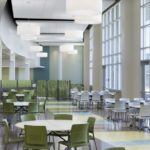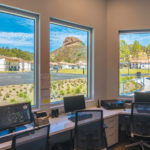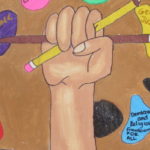Top 5 Most-Read Correctional News Stories of 2017
The month of January is named for Janus, the two-faced Roman god who was depicted as simultaneously looking backward and forward. You can see how the notion might be useful for editors, who annually take the month as an opportunity to look back on our editorial calendars to see what kind of stories you, our readers, enjoyed so that we can give you more in the future.
From a glancing, totally unscientific analysis (i.e., pageviews), we deduced a few trends: you guys like learning about technological innovations, sustainability in all its permutations and (drum roll, please!) children’s prison art. Yeah, we didn’t expect that either — but you clicked and we listened. Below are five top stories you may have missed or that might merit a revisit. As always, if you have a lead for future coverage, you can always reach us here.
The Future of Sustainability: Eclipsing the Building?
 On Aug. 23, I was part of the exodus from St. Louis, leaving the American Correctional Association’s (ACA) summer conference along with so many others who descended here for the powerful experience of being in the path of the Great American Eclipse. Who knew when this year’s ACA location was picked that we would be within 30 miles of totality? And how smart of Corizon Health to have eclipse glasses as their vendor giveaway? Read more
On Aug. 23, I was part of the exodus from St. Louis, leaving the American Correctional Association’s (ACA) summer conference along with so many others who descended here for the powerful experience of being in the path of the Great American Eclipse. Who knew when this year’s ACA location was picked that we would be within 30 miles of totality? And how smart of Corizon Health to have eclipse glasses as their vendor giveaway? Read more
Is P3 Becoming Accepted in the Corrections Market?

P3, otherwise known as a “public-private partnership,” has been an emerging trend in corrections construction circles both on site and around the water cooler. To get clarity on the subject, Correctional News spoke with justice design architects Beverly Prior, FAIA, NCARB, LEED AP, vice president, Justice Lead, U.S. West; DLR Group Global Justice+Civic Leader Darrell Stelling, AIA; and Gerry Guerrero, AIA, DBIA, of HOK. Here are the architect responses that give you a preview of what’s to come in an architect’s roundtable being published in our January/February issue. Read more
Facility of the Month: Sustainable Justice Changes the Future for Juveniles
 Los Angeles County’s Campus Kilpatrick opened its doors to juvenile inmates in July 2017, providing a school campus–like atmosphere intended to have a positive impact on juveniles and society at large. “This is truly a community-based, long-term solution that’s hopefully going to have a huge impact on the life of kids in L.A. County,” said Andrew Cupples, AIA, principal and global justice design leader for DLR Group, the architect on the project. Read more
Los Angeles County’s Campus Kilpatrick opened its doors to juvenile inmates in July 2017, providing a school campus–like atmosphere intended to have a positive impact on juveniles and society at large. “This is truly a community-based, long-term solution that’s hopefully going to have a huge impact on the life of kids in L.A. County,” said Andrew Cupples, AIA, principal and global justice design leader for DLR Group, the architect on the project. Read more
Children’s Prison Art Program Helps Juveniles Process Emotions Through Art
 There is a growing body of research that shows a direct connection between arts education in prison and lower rates of recidivism. The Children’s Prison Art Program (CPAP) in Houston is a nonprofit that helps kids in juvenile detention to process their emotions through art, putting the research to the test. CPAP’s mission statement is: “to expose youth in correctional facilities to an innovative, educational creative writing, theater and visual art forum where they can express their thoughts and visions in constructive ways, and present their art to their peers and to the community at large,” according to the nonprofit’s website. Read more
There is a growing body of research that shows a direct connection between arts education in prison and lower rates of recidivism. The Children’s Prison Art Program (CPAP) in Houston is a nonprofit that helps kids in juvenile detention to process their emotions through art, putting the research to the test. CPAP’s mission statement is: “to expose youth in correctional facilities to an innovative, educational creative writing, theater and visual art forum where they can express their thoughts and visions in constructive ways, and present their art to their peers and to the community at large,” according to the nonprofit’s website. Read more
How to Meet the Communication Needs of Deaf Inmates
 The special communication needs of deaf inmates are not always addressed, and the available resources are often unknown to facility owners. As a result, deaf individuals serving prison or jail terms are being denied access to the telephone network that they have constitutional and statutory rights to use, even in correctional facilities. Read more
The special communication needs of deaf inmates are not always addressed, and the available resources are often unknown to facility owners. As a result, deaf individuals serving prison or jail terms are being denied access to the telephone network that they have constitutional and statutory rights to use, even in correctional facilities. Read more

